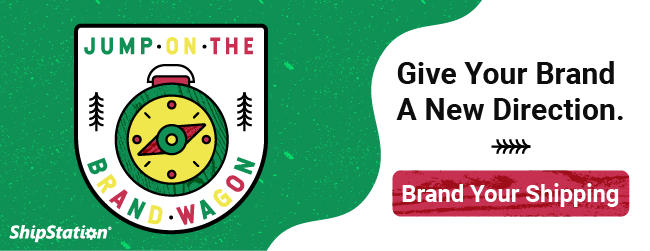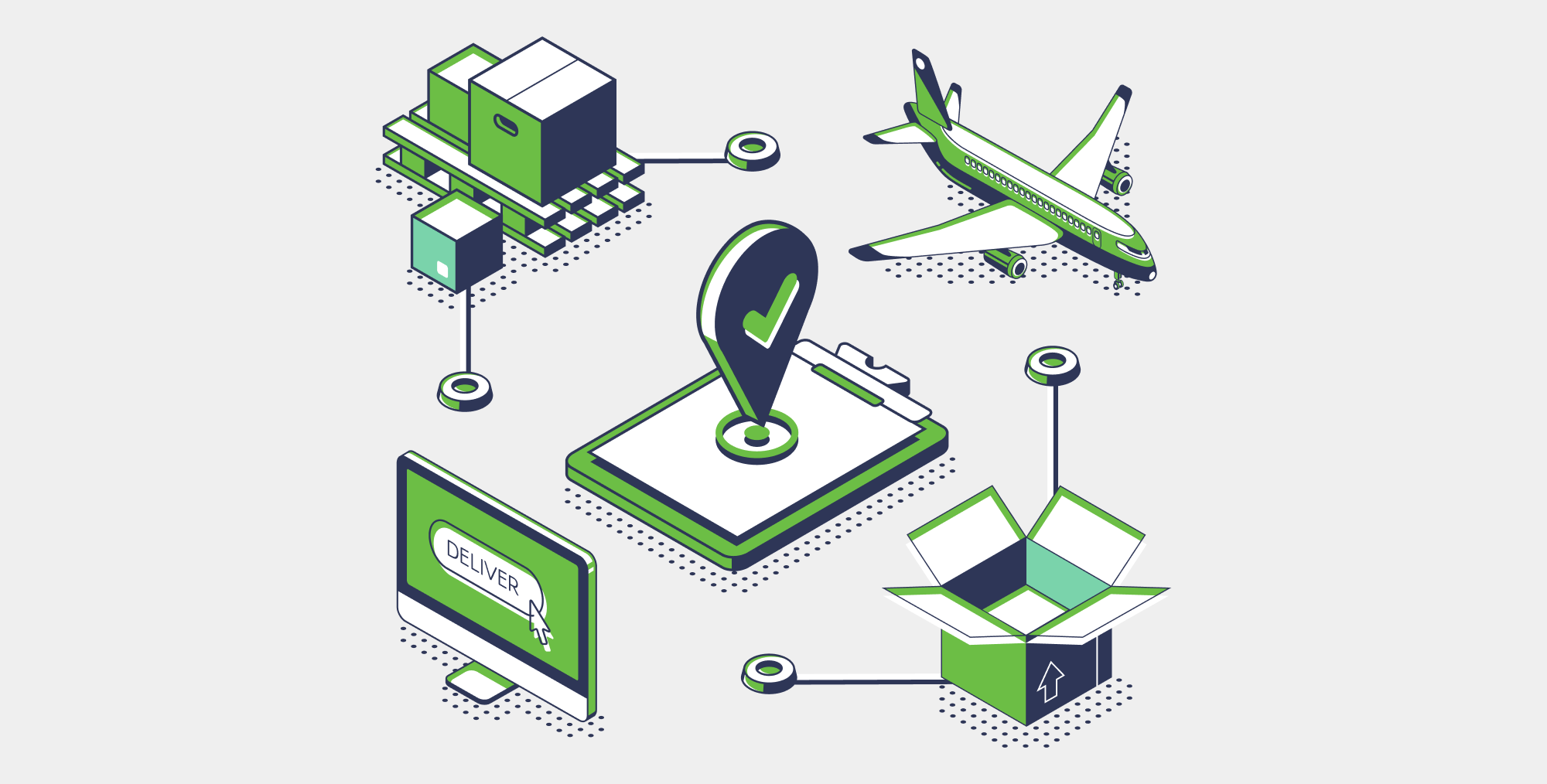Upgrade the CX with Personalized Ecommerce Marketing
Consumers want to shop with stores that “get” them. Those are the brands they gravitate toward. Consequently, the retailers who can show they appreciate what makes each consumer unique are the ones with the most loyal customers.
In theory, it’d be more challenging for ecommerce brands to create a truly customized, one-to-one customer experience (CX). There are no in-person conversations. And except for phone calls, every interaction is really just a series of ones and zeroes.
But in reality, online retailers are in a great position when it comes to personalization. They have multiple channels on which they can deliver customized experiences. And modern ecommerce marketing technologies are designed to make impressing shoppers as easy as possible.
To create a devoted customer base, you need to make every shopper feel special.
And to do this, you need to take advantage of the power of personalized ecommerce marketing.
Take a look at these five ecommerce personalization tools and discover why you need to invest in them ASAP.
1. Buyer Personas

How much do you know about a typical customer? You’ve likely got her key demographic details like age, gender, and geographic location. But what information do you have beyond that? Do you know her interests or lifestyle? Do you know what motivates and influences her?
If your understanding of your customers is only skin-deep, so to speak, your opportunities to personalize will be extraordinarily limited. Personalization can’t exist in marketing campaigns where audiences are segmented only by the shoppers’ most basic characteristics.
| This is why the first step of developing a personalized ecommerce marketing strategy is creating buyer personas. |
The Basics of Buyer Personas
Buyer personas are fictional representations of your ideal customers. Building buyer personas requires picturing your customers as individuals with unique behaviors and preferences. This approach allows you to create more precise audience segments. And with this precision comes the ability to create more targeted, more personalized marketing.
To create accurate buyer personas, you need to collect data from every available source. This includes your customer database, website analytics, social media pages, and market research. Also try to get answers straight from the horse’s mouth by sending surveys to your current customers.
Organize the data you’ve collected and start creating your buyer personas. Every persona should cover the following:
- Demographics — e.g., gender, age, geographic location, occupation, income, and level of education
- Hobbies and Interests
- Shopping Motivations
- Frustrations/Concerns
- Preferred Communication Method(s) —e.g., email, social media, text message, or direct mail
- Preferred Shopping Channel(s)
- Where the Persona Spends Time Online (including specific websites)
- How Your Brand Can Meet the Persona’s Needs
There is no recommended minimum or maximum number of buyer personas. Create as few or as many as you need. But be confident each supports your goal of improving your ecommerce personalization efforts.
→•←
2. Customer Relationship Management Software
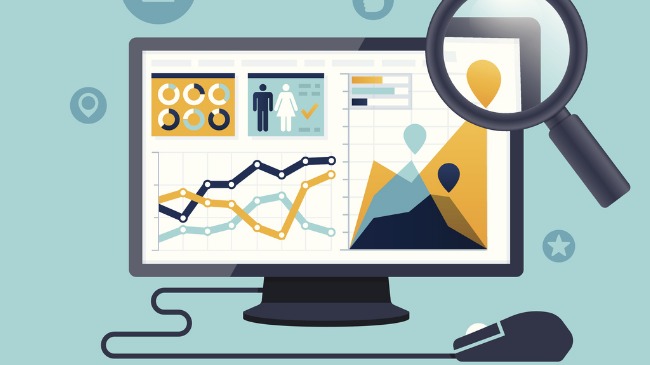
Data fuels ecommerce personalization. But customer data is only worthwhile if you can easily analyze it and make it actionable quickly. And if your data is spread across many disparate systems, it can check off neither of those boxes.
| If you want to have valuable data at your fingertips, you have to invest in customer relationship management (CRM) software. |
The Power of CRM
CRM software gathers customer data from multiple sources and compiles it into one database. What makes CRM software essential to personalized ecommerce marketing is that you can access every piece of data about a customer via a single interface. It doesn’t matter which type of device a customer uses or which selling channel she’s on. CRM solutions keeps track of every interaction.
CRM software can record and store information collected from your website, social media accounts, email communications, and marketing campaigns. You and your team can also manually enter details about a customer. In addition, you can connect your CRM to your other business systems to further expand customer profiles.
For example, integrating your CRM with your shopping cart platform will allow you to import a customer’s purchase history. And if you use a customer service software like Zendesk, you can connect it to your CRM and see what issues and inquiries the shopper has had in the past. CRM integrations are what enable you to really understand what makes each customer tick.
To consistently optimize your ecommerce marketing strategy, build a reciprocal relationship between your buyer personas and CRM software. In other words, when you’re first creating your buyer personas, use data from your CRM to establish some of the core persona characteristics. Then, assign the appropriate persona to customers in your CRM.
As your CRM collects data, you can determine how accurate your personas are. For instance, the data in your CRM may reveal a single persona can be split into two more specific personas. Or it may show one of your personas is a bit too niche to spend time targeting.
This insight will help you more effectively segment your audience and allocate resources. In turn, you’ll be able to better execute personalized ecommerce marketing.
→•←
3. Marketing Automation Software
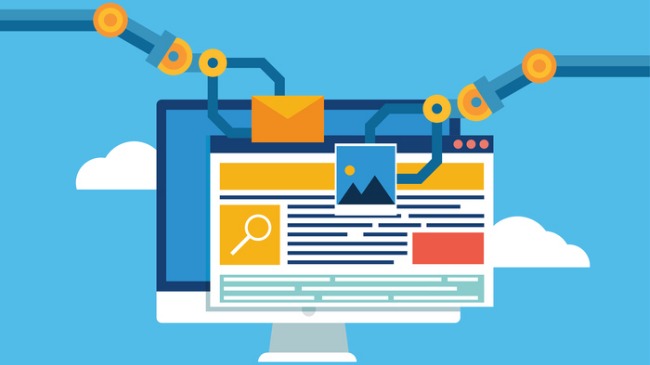
Personalized marketing requires satisfying three criteria:
- Delivering the right content
- To the right audience
- At the right time
When you look at those steps in a vacuum, it seems straightforward. But the customer journey isn’t a straight line where every shopper takes the same actions. And the times when a shopper interacts with your brand aren’t always during business hours.
| To leverage every opportunity to connect with customers, you need marketing automation software. |
Easier Personalization Through Automation
Marketing automation software is a platform that automates repetitive parts of digital marketing. E.g., sending emails, launching campaigns, and making social media posts. In a broader sense, marketing automation software automates the process of moving shoppers along the customer journey.
It may seem silly to discuss automation in an article about personalization. Usually, hearing “automation” conjures images of cyborgs and machinery and artificial intelligence. That is, a whole bunch of things that don’t seem compatible with person-based marketing.
The truth is marketing automation software is actually among the most powerful ecommerce personalization tools.
We all makes mistakes. And we can only remember a certain volume of data. But with marketing automation software, you don’t have to worry about human error or running out of data storage. You just need to be confident your data sources are reliable and accurate.
Using marketing automation software involves two steps. First, integrate the software with your CRM solution and/or ecommerce platform. Then, create unique triggers that once activated by a customer in your database prompt the software to serve specific content.
What the customer sees is based on the action he took as well as any data you’ve collected about him. The content could be an email, an ad on social media, or a website message, for example.
Because the trigger only activates when a particular action is completed, the content is timely. And since it’s based on the shopper’s individual customer profile, it’s highly relevant to him, too. Thus, it satisfies the three crucial criteria of effective personalized ecommerce marketing. All without any human interaction beyond the initial trigger creation.
→•←
4. Cross-Channel Campaign Management Software
![]()
Every channel has its own restrictions, requirements, and best practices. So your approach to social media or email marketing can’t be the same as your approach to marketing on your website. You’ll likely build your strategy based on the perception that each channel is, to a certain extent, independent from one another.
Your customers, however, don’t see it that way.
When a shopper engages with your brand, her attitude isn’t, “I am interacting with [company] on social media or on their website or on their app.” It’s, “I am interacting with [company].” Full stop. Shoppers expect a consistent experience every time they communicate with your business — regardless of the channel.
This consistency is especially important when it comes to personalized marketing. There can’t be a disconnect between the content or messaging they see as they move across channels. For instance, you can’t send a shopper an email with a coupon code they’ve already redeemed via Facebook.
Social media- or email-specific marketing software can certainly help ecommerce brands enhance their personalization strategy on those respective channels. But each platform has its own profile for every customer. This makes it more difficult to guarantee what a customer sees on Facebook matches what she sees in her inbox.
| The key to a seamless CX is cross-channel campaign management software. |
Breaking Down Silos
Cross-channel campaign management software collects and validates data from your website, mobile app, social media accounts, search engine marketing (SEM), and display advertising. It gives you on-demand insight into how each individual customer engages with your brand on every channel.
Every popular ecommerce marketing solution has reporting and analytics features. But the data is still channel-specific. So say you want to see how your holiday social media campaign stacks up against your holiday email campaign. You’ll have to export the reports from both platforms first. Then you have to upload the reports to another software like Excel to compare the data.
And as soon as you export the report, it’s static. In other words, there’s no new information unless you run the report and download the results again.
But with cross-channel campaign management software, you can compare the performance of campaigns on any channel in a single platform. Plus, the data is constantly being updated. You’ll know you’re using the most accurate, up-to-date information to guide your personalized ecommerce marketing strategy.
→•←
5. Marketing Attribution Models
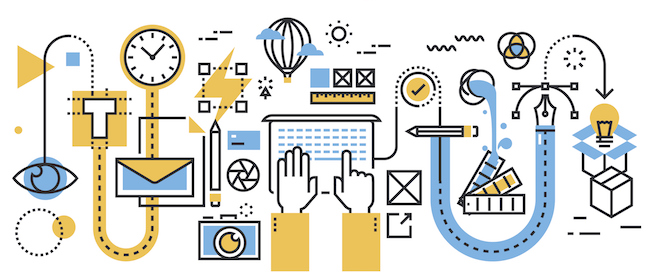
Think about the number of channels on which you can communicate with shoppers. Then, consider the various types of content you can share on each of these channels. Finally, think about how many different ways you can personalize the content — e.g., recommending best selling products, suggesting merchandise related to past purchases, offering a promo code for items in an abandoned cart, etc.
Now consider how many different combinations of channel + content type + messaging there are.
| Unfortunately, there’s no way to know how much each element of your marketing mix individually contributed to a conversion. |
| _ |
| Unless you use a marketing attribution model. |
Marketing attribution involves identifying the individual interactions a customer has with your brand and then assigning credit to these interactions. It takes out any guesswork and gives you the ability to see objectively how much each touchpoint influenced her decisions.
When you use a marketing attribution model, you can see which types of content and/or promotions bring shoppers closer to conversion. You’ll also know the extent to which each channel interacts with one another.
Example of Attribution in Action
» A customer visits your site on Monday and puts a rain jacket in her cart. Before she can checkout, she realizes she has a meeting and closes the window.
» Two days later, she receives a reminder email about her abandoned cart. She opens the message but is again at work and doesn’t have time to finish the transaction.
» The next day, she sees a Google Display remarketing ad showing the jacket in several colors. She doesn’t click on it but sets a mental reminder to return to your site.
» Finally, on Friday she sees a Facebook ad containing the jacket as well as a sweater and pair of waterproof boots. She clicks on the ad and checks out.
Without attribution, you may think the Facebook ad was the most important touchpoint. But it was actually the combination of all three communications that led the shopper to complete checkout. So if you invested more in Facebook and neglected the other channels, it could hurt performance.
But an attribution model allows you to see the entire customer journey. This enables you to make data-driven decisions about your personalized ecommerce marketing strategy. Plus, it helps you increase the ROI of your campaigns since you’ll know how to properly allocate time, budget, and resources by channel and content type.
![]()
![]()
![]()
Don’t feel pressured to go all out when you’re first building your strategy. If you try to do too much too soon, you’ll end up in a situation where it may have actually been better to keep your marketing generic. Start small, take advantage of these ecommerce personalization tools, and keep an eye on performance. And make sure any decision you make is based on data, not assumptions.
